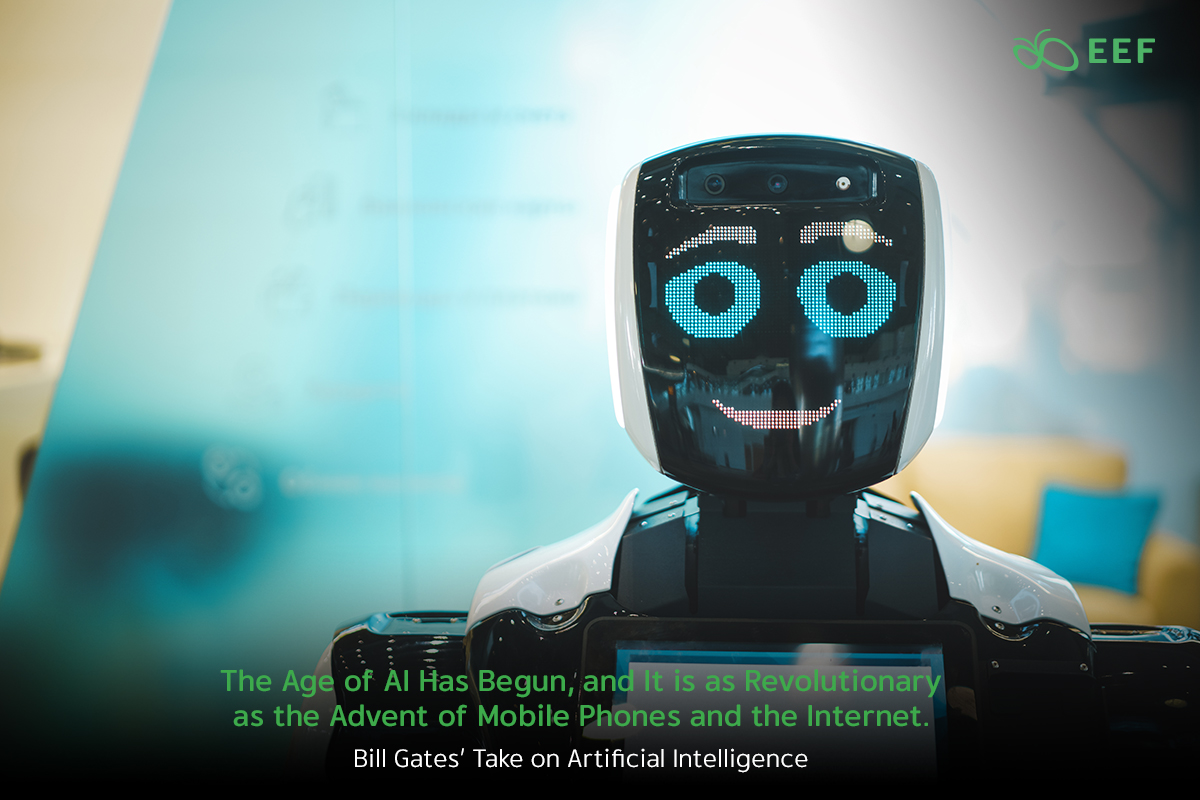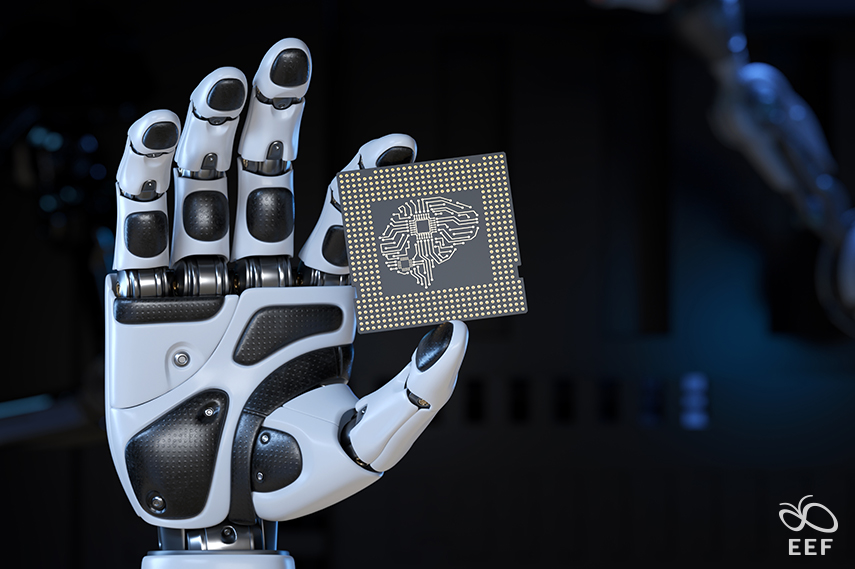
Bill Gates was struck with awe after witnessing the astonishing abilities of the AI model ChatGPT, which correctly answered 59 out of 60 multiple-choice questions and provided impressive responses to open-ended queries. As a renowned tech visionary and co-founder of Microsoft, Gates was not easily impressed; However, witnessing this technological feat left him with a realization that he had just witnessed the most significant advancement in technology since the invention of the graphical user interface. Moved by this experience, he immediately took it to his blog, GatesNotes, where he discussed the implications of AI and boldly declared in its title that “The Age of AI Has Begun: Artificial Intelligence Is as Revolutionary as Mobile Phones and the Internet.”
In his blog, Gates recalled witnessing only two technological demonstrations that he found truly revolutionary in his lifetime. The first was the graphical user interface, way back in 1980. It was the harbinger of modern operating systems like Windows and its user-friendly approach to computing blew Gates’ mind. Captivated by the technology, he and his colleague immediately started brainstorming ideas of what they could do with such a technology, which ended up setting the company’s agenda for the next 15 years. The second one came just last year when Gates issued a seemingly impossible challenge to the OpenAI team: train artificial intelligence to pass an AP Biology exam. To his surprise, the team completed the task in just a few months, leaving him utterly stunned. Gates was so amazed that he felt compelled to write about it.
This experience has left him excited about the potential of artificial intelligence (AI) and its possible applications in the next 5-10 years. He believes that the development and impact of AI could be as transformative as the creation of mobile phones and the Internet. It has the power to revolutionize various aspects of human life, leading to entire industries reorienting around it and businesses set themselves apart by how well they use it.
The quest for quintessential artificial intelligence and artificial general intelligence (AGI) has been a long-standing obsession of the computing industry. For decades, researchers have been trying to create machines that can think, reason, and learn like humans. Initially, AI has been developed to solve specific problems or provide particular services, such as chatbots, which are constantly learning to converse with humans in a natural language. But as technology advanced, the dream of creating machines with general intelligence or AGI became more real.
AGI refers to software that can learn anything and everything, just like a human being, one that can master new tasks with ease, learn from its mistakes, and constantly improve its abilities. But developing such a machine is not an easy task, and it requires a level of computational power and complexity that is way beyond what we currently have.
Despite the challenges, the pursuit of AGI continues to be a topic of intense debate and research. Some experts believe that we are on the cusp of creating AGI, while others think it is impossible. One thing is clear, though — the development of AI and AGI could have profound implications for the future of humanity, in particular education and employment.
Despite high expectations from industry experts, the impact of computers on education has been somewhat underwhelming. While we have seen some progress in the form of educational games and online resources, overall student achievement has not seen a significant boost. However, Gates is holding out hope for a dramatic transformation within the next decade. He believes that AI-driven software has the potential to finally deliver on its promise to revolutionize teaching and learning. This cutting-edge technology will personalize content to match individual interests and learning styles, keeping students engaged while simultaneously tracking their progress and offering real-time feedback.

The potential applications of AI in education are vast and varied. From evaluating student understanding to offering career advice, there are numerous ways in which this cutting-edge technology can assist teachers and administrators. Already, educators are using tools like ChatGPT to provide personalized feedback on students’ writing assignments. While many educators are concerned that students are using GPT to write their essays, they are already adapting to this new technology, devising innovative ways to incorporate the tool into their work, such as allowing students to use GPT to create a first draft that they then have to personalize.
However, for AI to truly revolutionize education, it must first undergo extensive training and development. It needs to understand each student’s unique learning style and motivation to succeed. Besides, to prevent bias, it needs to be trained on diverse data sets reflecting different cultures, and the digital divide must be bridged to prevent students in low-income households from being left behind. While AI is poised to become an invaluable asset to the educational system, it will never replace the fundamental relationship between teachers and students. This relationship is the cornerstone of the educational process, and even with the latest technology at our fingertips, it will always be a critical aspect of learning. AI can enhance the work done by students and teachers together in the classroom, but it can never fully take their place.

AI capabilities are becoming increasingly impressive. We are moving towards a future where people will be able to communicate with their devices using natural language, making tasks, such as scheduling and email management easier and more intuitive. This will be aided by the development of digital personal assistants that will be able to understand and respond to individuals’ specific needs.
While humans still hold many advantages over machines, there are specific roles where AI can provide unparalleled benefits. Sales, customer service, and document handling are just a few examples of roles where AI can assist in streamlining operations and providing personalized services. With the ability to be trained on data sets, AI can enhance productivity and save time and resources. And as computing power becomes more accessible and affordable, AI’s potential to express ideas and interact with humans in natural language will become even more advanced, essentially creating a digital co-pilot for workers.
However, at the same time, we must consider the ethical implications of AI. Privacy concerns and potential misuse of AI have been raised, but these issues can be addressed through proper implementation. By doing so, AI could revolutionize the way we work and free up time for more meaningful endeavors, and in fields such as education, where there is a great need for more workers, AI could help reduce inequities if targeted correctly. Nevertheless, governments and organizations must prioritize retraining programs to help workers transition into other roles that are not threatened by AI. At the same time, we must recognize that some positions will always require human compassion and interaction.
The potential of AI in the workplace is significant, but we must proceed with caution. The future of work will involve humans and machines working together, each bringing their unique skills to the table. It is time to embrace the change and explore how AI can help us work more efficiently while also prioritizing the well-being of workers. As we continue to progress, we can create a brighter future where technology is harnessed to uplift humanity, not the other way around.
The buzz surrounding artificial intelligence has been growing louder in recent times, but there are still challenges and issues associated with the current AI models. One of the primary issues is the lack of context understanding by AI when it comes to human requests, which can result in strange and unexpected outcomes. While developers are working on fixing this problem, there are also concerns about the potential for humans to misuse AI, which requires a collaborative effort between the public and private sectors to minimize the risks.
Furthermore, there are concerns that AIs may become uncontrollable and establish their own goals, especially with the development of super-intelligent AIs that can match or even exceed the capabilities of human intelligence, which has always been dreamed of, in particular with the arrival of machine learning and powerful computing that make sophisticated AIs become a reality. However, it is important to note that despite the impressive advancements in AI, we are not yet close to this hypothetical scenario. AI cannot still manipulate the physical world or establish goals on its own.
The possibilities of AI are immense, but we must also be aware of its potential risks and limitations as we continue to explore its potential. There is no doubt that AI has the potential to revolutionize many industries and significantly improve our lives. Companies are developing new uses for AI and enhancing its technology with advanced chips, optical switches, and algorithms that drive AI learning, among others. Some are even aiming to create an artificial general intelligence that can learn any task.
With public discussion on AI continuing to dominate, three principles should guide it. Firstly, while fears about AI’s downsides must be acknowledged, we must also recognize its potential to improve people’s lives. Secondly, governments and philanthropy must ensure that AI is used to reduce inequity, as market forces alone are unlikely to do so. Finally, the limitations of AI today will be gone before we know it, and we must establish the rules of the road so that its benefits far outweigh any downsides.

As we enter the Age of AI, we must acknowledge the endless possibilities and also the responsibilities that come with it. With reliable funding and the right policies, AI can help reduce inequity and improve lives. However, we must establish the rules of the road to ensure that everyone can enjoy the benefits, regardless of their location or financial standing. The future of AI is exciting, and we must work together to make the most of it. The world is standing on the brink of a new epoch, and we are witnessing history in the making.
In the words of Gates, “We always overestimate the change that will occur in the next two years and underestimate the change that will occur in the next ten.” AI is a prime example of this. It is a technological revolution that is just getting started, and we can only imagine the possibilities that it will bring in the next decade. From transforming the way we learn and work to reducing global disparities, AI has the potential to create a brighter future for all of us.
But as with any new technology, it comes with its own set of challenges and risks. The responsibility falls on us to work together and ensure that AI is developed and used in a way that benefits humanity, and not the other way around. For Gates, the future of AI is not just about innovation and progress, but about how it can be used to create a more equitable and just world. He envisions a future where AI is a force for good, helping to bridge the gap between the haves and the have-nots, and ensuring that everyone has access to the benefits of this powerful technology.
Source:
The Age of AI has begun. Artificial intelligence is as revolutionary as mobile phones and the Internet. By Bill Gates

